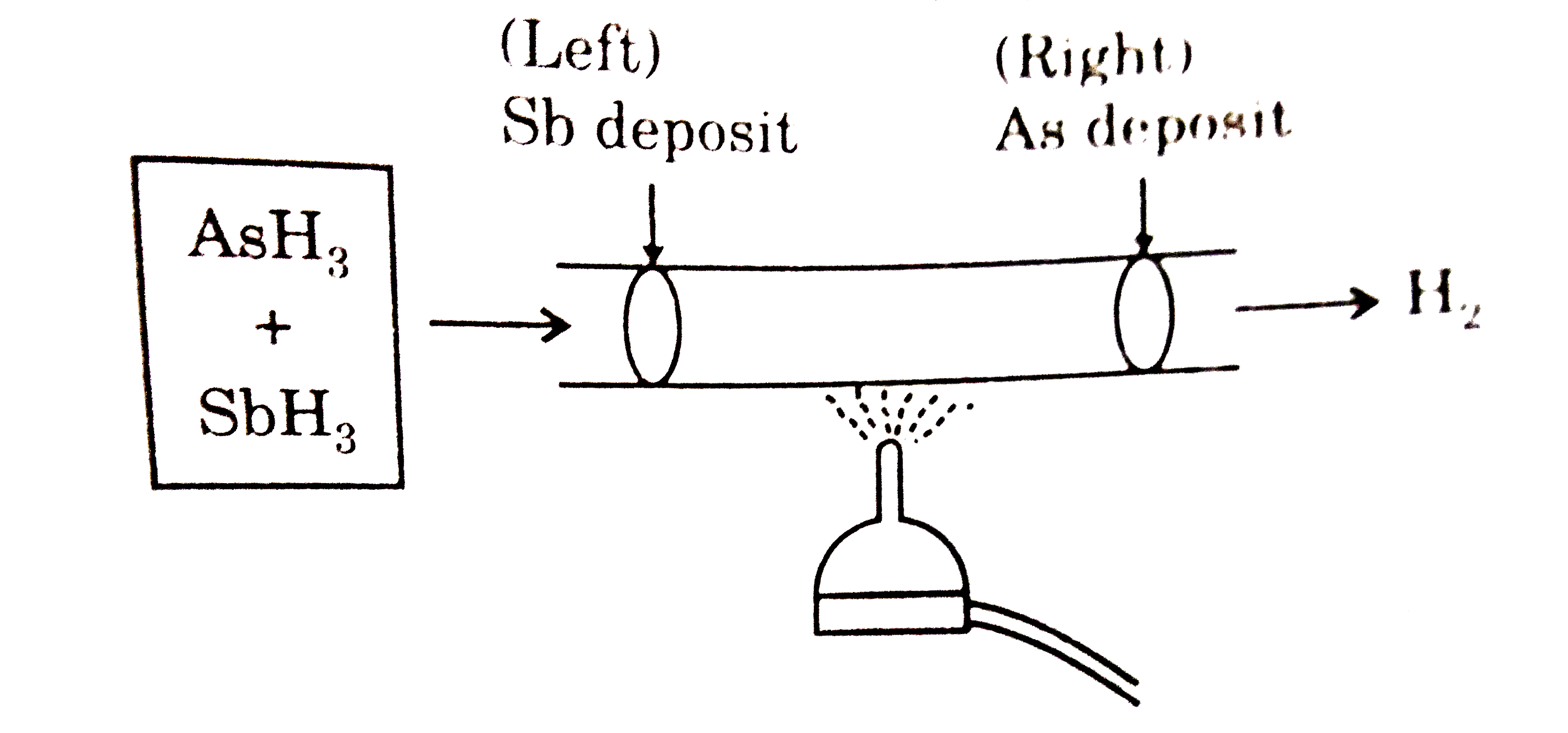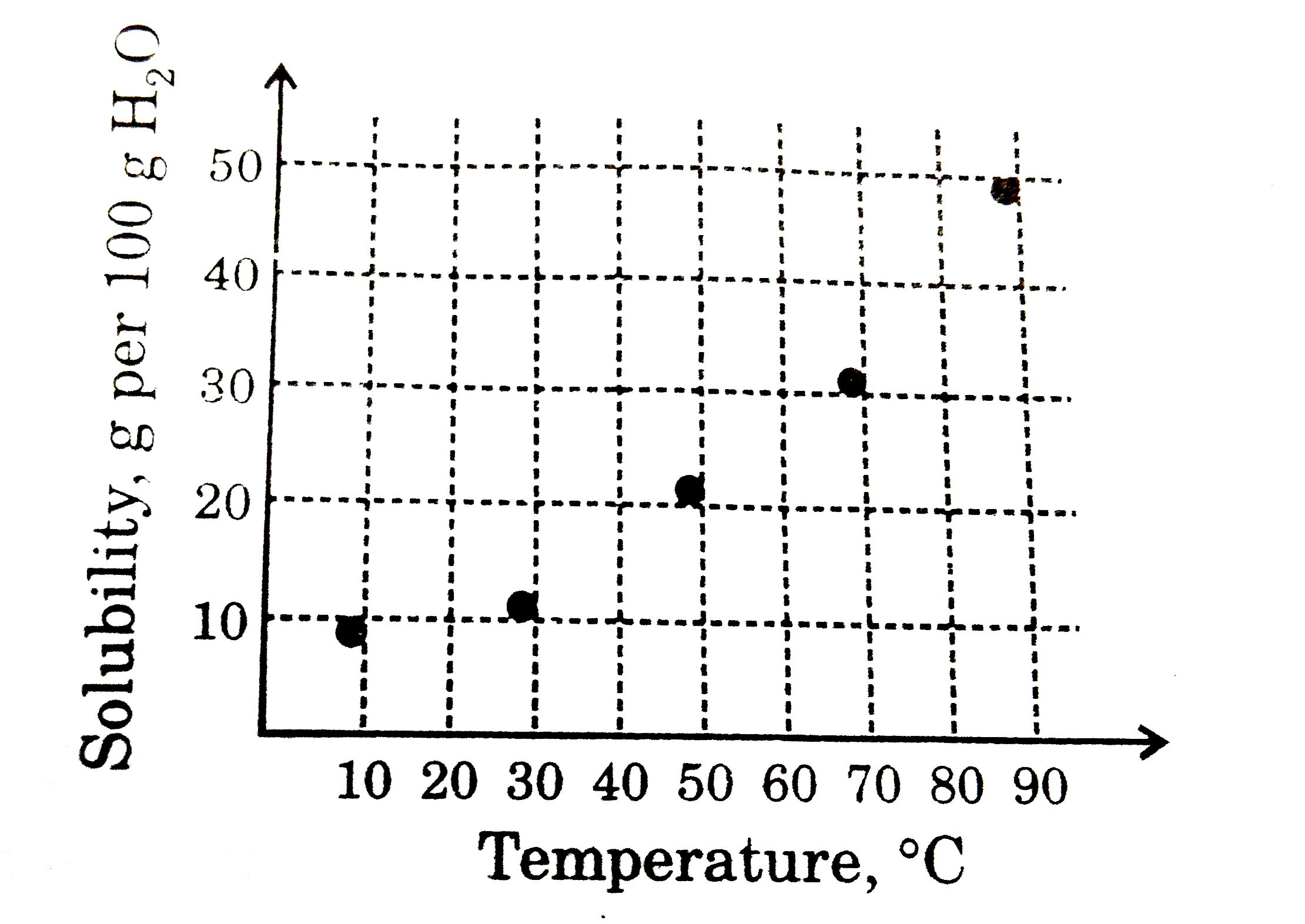Complete Solutions to A. Experimental (Laboratory/Apparatus Based) of chapter SALT ANALYSIS of Class 11 book with complete answers and questions
| Class 11 | CHEMISTRY |
| Chapter | SALT ANALYSIS |
| GRB PUBLICATION | A. Experimental (Laboratory/Apparatus Based) |
| Number Of Questions | 29 |
| Academic Year | 2023-24 |
When is it acceptable to eat in a chemistry laboratoyr?
View SolutionWhich techanique is recommeded for determining the odour of an unknown liquid in the laboratory?
View SolutionWhich letter in the diagram depicts the hottest portion of a Bunsen burner flame?

View SolutionWhat is the proper technique to test the odour of a vapour in a test tube?
View SolutionWhich procedure (s) will alow a student to differentiate between solid sodium sulphate and solid sodium sulphite?
(P) Make solution of each and look for a precipitate when added to `0.10M Ba(NO_(3))_(2)`.
(Q) Add crystals of each to `0.10M HCI` and watch for bubbles.
(R) Make solutions of each and test with a pH indicator
View SolutionWhich procedure is recommended for reading the level of an aqueous solution in a buret or graduated cylinder?
View SolutionA student performed an experiment to determine the ratio of `H_(2)O` to `CuSO_(4)` in a sample of hydrated copper (II) sulphate by heating it to drive off the water and weighing the solid before and after heating. The formula obtained experimentally was `CuSO_(4).45H_(2)O` but the accepted formula is `CuSO_(4).5H_(2)O`. which error best accounts for the difference in results?
View SolutionA student prepares a `100mL` aqueous solution containing a small amount of `(NH_(4))_(2)SO_(4)` and a second `100mL` solution containing a small amount of NaI,then mixes the two solutions. Which statement describes what happens?
View SolutionFor aqueous solutions of which of the following substances could the concentration be determined by visible spectrophotometry?
(P) `Cr(NO_(3))_(3)` (Q) `KMnO_(4)`
(R) `Zn(NO_(3))_(2)`
View SolutionFour elements were tested in the laboratory and gave the results in the table below. Which element is a metalloid?
`|{:("Element","Appearance","Conductivity","Bahvaiour with HCI"),(A,"Slight luster","High","Bubbles slowly"),(B,"Shiny","Low","No reaction"),(C,"Dull","None","No reaction"),(D,"Shiny","High","Bubbles rapidly"):}:|`
View SolutionA student is asked to dispense `24.70 mL` of a solution with an uncertainty of less than `0.02mL`. Which item should be used for this task?
View SolutionWhich action should be taken immediately if concentrated sulphuric acid is spilled on the skin?
View SolutionIn an experiment to determine the empirical formula of magnesium oxide, a student weights an empty crucible then adds a strip of magnesium metal and reweighs the crucible. The crucible and magnesium are heated with a burner flame, which ignits the magneisum and forms a grey-white solid. After cooling, the crucible and solid are reweighed and the date are analyzed to given an empirical formula of `Mg_(5)O_(4)`. Which could account for the observed `Mg_(5)O_(4)` results rather than the expected `MgO`?
View SolutionWhen is liquid is delived from a volumetric pipet a small amount is typically retained in the tip. How should a student proceeds in order to deliverthe volume of liquid stated on the pipet?
View SolutionA student wishes to measure `17.3mL` of a standard solution. This can be done best using which container?
View SolutionA student is asked to determine the degree of hydration of a salt by finding the mass of a clean dried crucible and lid followed by the mass of the crucible and lid containing a sample of the salt. The crucible, lid and salt are heated in Bunsen burner flame, cooled, and weighed. if the crucible, lid and salt are heated only one instead of the recommended three times, whatwill be the effect on the degree of hydration compared with the actual value?
View SolutionWhich piece of laboratory equipment should be used to deliver a `10.00mL` sample of acid from a stock container to a flask for a titration?
View SolutionThe apparatus shown would be used to:

View SolutionIf an individual spills some `8MH_(2)SO_(4)` on her/his arm, what treatement should be used?
View SolutionWhich laboratory results will tell whether an unknown white solid is `NaOH` or `NH_(4)NO_(3)`?
View SolutionWhich procedure for dispensing a liquid with a volumetric pipet is correct?
View SolutionWhich technique is preferred for delivering a solid into a pre-weighed beaker for weighing?
View SolutionA student standardizes a solution of `Na_(2)S_(2)O_(3)` by titrating it against a solution containing a known mass of `NaIO_(3)` that has been dissolved in an excess of a freshly prepared solution of KI in dilute HCI. Which of the following errors will lead to a value of the molarity of the thiosulphate solution that is higher than the true value?
View SolutionWhich piece of laboratory apparatus is not used for the purpose listed?
`|{:("Apparatus","Purpose"),((A)"Aspirator","measure height"),((B)"Burnet","measure volume"),((C)"Calorimeter","measure thermal energy change"),((D)"Desiccator","store samples in dry conditions"):}:|`
View SolutionThe Marsh test is described as follows:

In this test, if `SbH_(3)` and `BiH_(3)` mixture is sent then which of the following statement is correct?
View SolutionThe solubility of `KCIO_(3)` at several temperature is shown in the accoupanying diagram.

A student mixed `10.0g` of `KCIO_(3)` with `45.0g` of `H_(2)O` and stires it for a long time at `60^(@)C` until the solution is completely clear then allows it to cool slowly to `20^(@)C` where it remains clear. which statement about the final clear mixture at `20^(@)C` is correct ?
View SolutionA student wished to measure `37mL` of a liquid. Which apparatus would be most suitable?
View SolutionA `2.0mL` sample of a colourless solution, when treated with a few drops of `2M` hydrochloric acid, forms a while precipitate which dissolves when the solution is heated to boiling. The original solution could have contained which of the following cations?
(P) `0.1M Ag^(+)` (Q) `0.1M Pb^(2+)`
View SolutionWhich is the proper way to heat a liquid in a test tube?
View Solution
A. Experimental (Laboratory/Apparatus Based) questions and complete solutions for chapter SALT ANALYSIS of GRB CHEMISTRY (HINGLISH) of Class 11
All Exercises from GRB PUBLICATION Class 11 CHEMISTRY SALT ANALYSIS
- A. Experimental (Laboratory/Apparatus Based)
- B. Dry Tests/Colour/Solubility/Heating Effects
- C.Class- A Subgroup-I-Acidic Radicals
- Comprehension
- Comprehension 1
- Comprehension 10
- Comprehension 11
- Comprehension 12
- Comprehension 13
- Comprehension 14
- Comprehension 15
- Comprehension 16
- Comprehension 17
- Comprehension 18
- Comprehension 19
- Comprehension 2
- Comprehension 20
- Comprehension 21
- Comprehension 22
- Comprehension 23
- Comprehension 24
- Comprehension 25
- Comprehension 26
- Comprehension 27
- Comprehension 28
- Comprehension 29
- Comprehension 3
- Comprehension 30
- Comprehension 31
- Comprehension 32
- Comprehension 33
- Comprehension 34
- Comprehension 35
- Comprehension 36
- Comprehension 37
- Comprehension 38
- Comprehension 39
- Comprehension 4
- Comprehension 40
- Comprehension 41
- Comprehension 42
- Comprehension 43
- Comprehension 44
- Comprehension 45
- Comprehension 46
- Comprehension 47
- Comprehension 48
- Comprehension 49
- Comprehension 5
- Comprehension 50
- Comprehension 51
- Comprehension 52
- Comprehension 53
- Comprehension 54
- Comprehension 55
- Comprehension 56
- Comprehension 57
- Comprehension 58
- Comprehension 59
- Comprehension 6
- Comprehension 7
- Comprehension 8
- Comprehension 9
- D.Class-A Subgroup-II Acidic Radicals
- E.Precipitation/Redox Reacttions
- F.Zero Group Cations
- G: Ist Group Cations
- H: IInd Group Cations
- I. IIIrd Group Cations
- J: IVth Group Cations
- K: Vth and Vth Group Cations
- L: Miscellaneous
- Match The Column Type
- Multiple Objective Type
- Reasoning Type
- Subjective Type